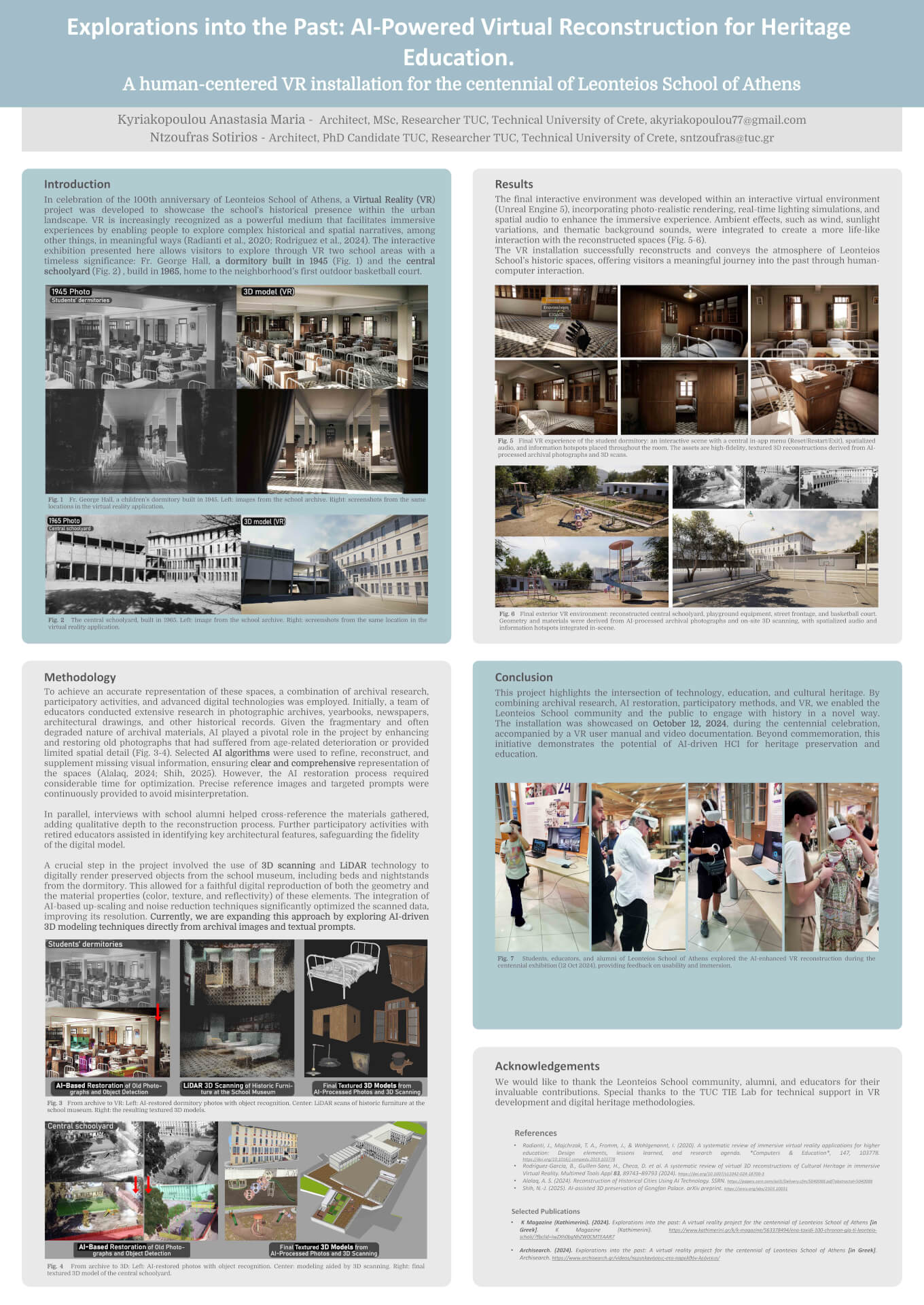In celebration of the 100th anniversary of Leonteios School of Athens, a Virtual Reality (VR) project was developed to showcase the school's historical presence within the urban landscape. VR is increasingly recognized as a powerful medium that facilitates immersive experiences by enabling people to explore complex historical and spatial narratives, among other things, in meaningful ways (Radianti et al., 2020; Rodriguez et al., 2024). The interactive exhibition presented here allows visitors to explore through VR two school areas with a timeless significance: Fr. George Hall, a dormitory built in 1945 and the central schoolyard, built in 1965, home to the neighborhood’s first outdoor basketball court.
To achieve an accurate representation of these spaces, a combination of archival research, participatory activities, and advanced digital technologies was employed. Initially, a team of educators conducted extensive research in photographic archives, yearbooks, newspapers, architectural drawings, and other historical records. Given the fragmentary and often degraded nature of archival materials, AI played a pivotal role in the project by enhancing and restoring old photographs that had suffered from age-related deterioration or provided limited spatial detail. Selected AI algorithms were used to refine, reconstruct, and supplement missing visual information, ensuring clear and comprehensive representation of the spaces (Alalaq, 2024; Shih, 2025). However, the AI restoration process required considerable time for optimization. Precise reference images and targeted prompts were continuously provided to avoid misinterpretation.
In parallel, interviews with school alumni helped cross-reference the materials gathered, adding qualitative depth to the reconstruction process. Further participatory activities with retired educators, assisted in identifying key architectural features, safeguarding the fidelity of the digital model.
A crucial step in the project involved the use of 3D scanning and LiDAR technology to digitally render preserved objects from the school museum, including beds and nightstands from the dormitory. This allowed for a faithful digital reproduction of both the geometry and the material properties (color, texture, and reflectivity) of these elements. The integration of AI-based up-scaling and noise reduction techniques significantly optimized the scanned data, improving its resolution. Currently, we are expanding this approach by exploring AI-driven 3D modeling techniques directly from archival images and textual prompts.
The final digital model was developed within an interactive virtual environment (Unreal Engine), incorporating photo-realistic rendering, real-time lighting simulations, and spatial audio to enhance the immersive experience. Ambient effects, such as wind, sunlight variations, and thematic background sounds were integrated to create a more life-like interaction with the reconstructed spaces.
This historical documentation serves both an educational and a cultural purpose, allowing the Leonteios School community as well as the general public to engage with the School’s history. The project was successfully showcased on October 12, 2024, during the school’s centennial celebration, offering attendees a powerful journey into the past. The project was accompanied by a VR users’ manual and a video documentation of the research and design process. This initiative highlights the potential of AI-driven Human-Computer Interaction (HCI) in digital heritage preservation, reinforcing the intersection of technology, education, and cultural memory.
Additional Keywords and Phrases: Virtual Reality (VR), Digital Heritage, AI-enhanced Restoration, Immersive Experience, Human-Computer Interaction (HCI), Participatory Design,3D Scanning, Archival Reconstruction, Cultural Memory. Educational Technology

